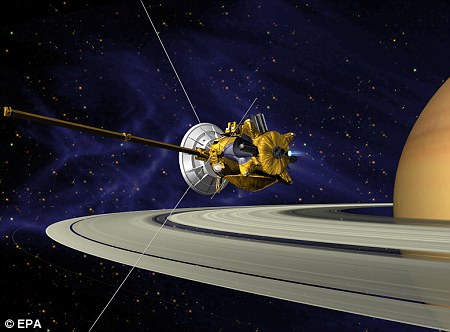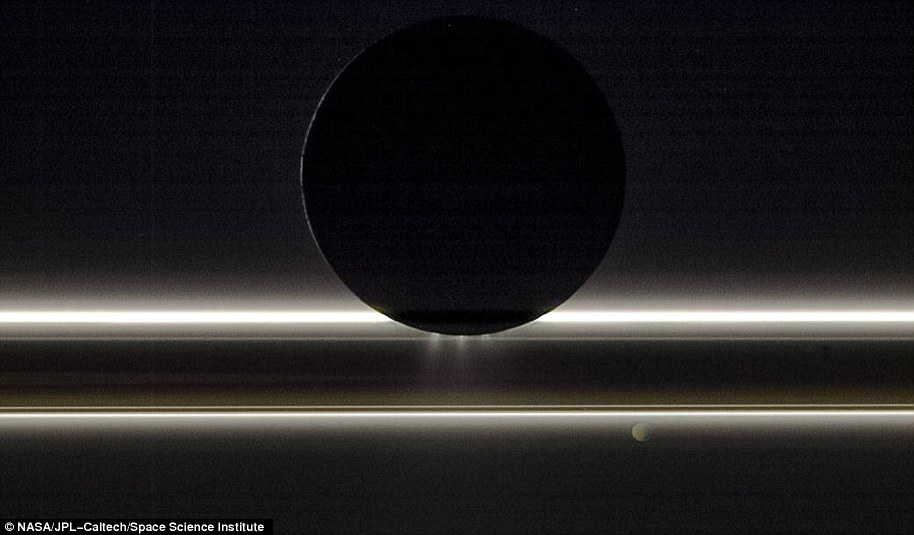Saturn‘s moon, Enceladus, could harbour alien life, scientists have discovered.
New findings from NASA‘s Cassini mission have revealed heat leaking out from the moon’s North Pole.
This suggests that the moon’s vast underground ocean might have a much more stable climate than had previously been thought.
According to the researchers, this means it might be the perfect place for life to evolve.
Although Enceladus’ icy surface is barren, its underground oceans have all the necessary ingredients for life.
However, until now, scientists weren’t sure whether the planet’s internal temperature could be stable for long enough for organisms to emerge.
Scientists can’t yet say whether life actually exists on the moon, but they have now shown that Enceladus has an ocean in which life stands a chance of surviving.
Co-author Dr Carly Howett, of the University of Oxford, told Daily Mail: ‘We think life likes stability to survive – so showing Enceladus’ energy is stable means its sub-surface environment probably is too.’

Saturn’s Moon Enceladus (artist’s impression) might be home to alien life, according to a new study, as researchers find heat escaping from the moon’s North Pole
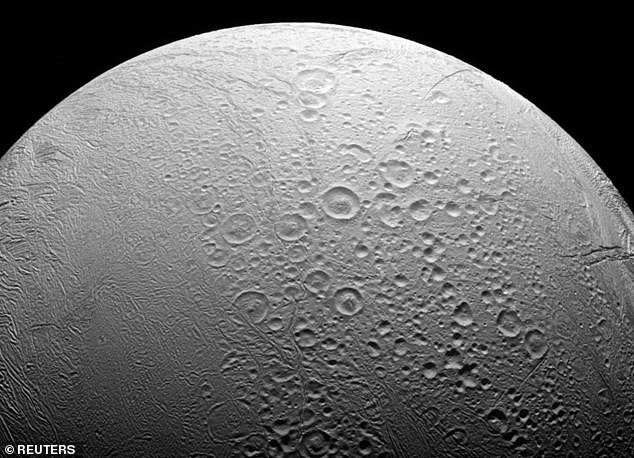
Although Enceladus looks barren on the surface, beneath the ice, there is a vast liquid water ocean which has all the ingredients for life. Pictured: Enceladus as seen by the Cassini spacecraft
With a diameter of 310 miles (500 km) – about as wide as Arizona – Enceladus is Saturn’s sixth–largest moon.
On the surface, conditions are exceptionally cold with temperatures as low as –201°C (–330°F).
But beneath the surface, there is enough heat energy to maintain a large, liquid ocean of water.
The moon gets heat from a process called tidal heating, where it is squeezed and stretched by Saturn’s gravity.
This energy prevents the moon from freezing completely, but the underground oceans would only be able to support life if the energy coming in matches the energy flowing out.
Dr Howett says: ‘If Enceladus is losing more energy than gaining, then eventually the whole moon will cool and Enceladus’ ocean is going to freeze – which is obviously bad for life!
‘If it’s gaining more energy than losing, then the ocean will heat and melt the ice shell from the bottom – which will change both the ocean’s temperature and chemistry.’
Previous studies have estimated how much energy Enceladus loses through its active South Pole, where jets of water are constantly erupting through tectonic fissures known as ‘tiger stripes’.
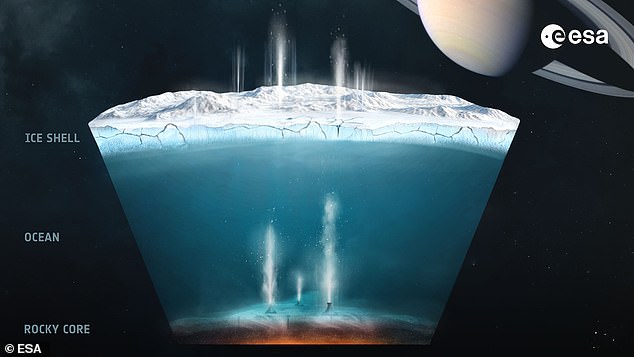
Scientists have calculated how much heat is escaping through the North Pole from the warm ocean below. This reveals that the planet is losing as much energy as it gets from the gravitational pull of Saturn

Since Enceladus’ energy is balanced, scientists say that its oceans are likely to be stable and long-lived. This increases the chances that the planet might have developed life
However, figuring out how much energy the entire planet loses from its ocean is extremely difficult because it heats the entire ice sheet at once.
This means there is only a tiny difference from the normal day-night temperature cycle at any given time.
‘These subtle temperature increases are easiest spotted against a cold surface, and probably where the ice shell is thinnest,’ says Dr Howett.
‘Enceladus’ north polar region met these requirements.’
Using measurements from the Cassini spacecraft, the researchers compared the surface temperature of the North Pole in deep winter and in summer.
This revealed that the surface around the pole was around 7°C (7 Kelvin) warmer than expected.
From this data, Dr Howett and her co-authors were able to calculate that the moon is losing 46 milliwatts of energy per square metre, or 35 gigawatts of energy across the entire planet.
Combined with the known energy loss from the active South Pole, Enceladus’ total energy loss rises to 54 gigawatts.
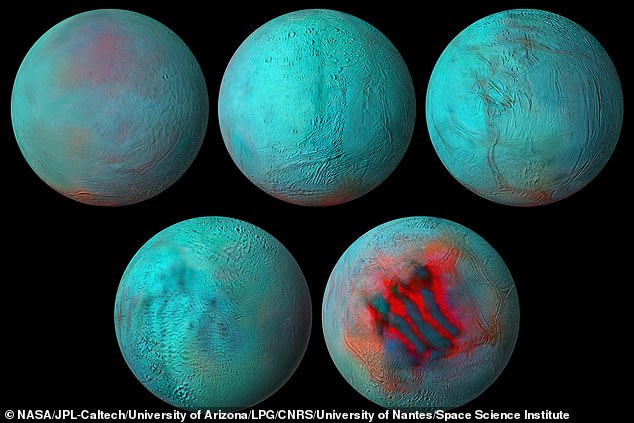
In 2005, the Cassini spacecraft discovered striking tectonic faults at the south pole known as ‘tiger stripes’ (bottom right), which allow water from the inner ocean to escape. Analysis found that this water contained complex molecules associated with the origins of life

Scientists don’t know yet whether the planet hosts life, but any life that does exist might look similar to that found around hydrothermal vents in Earth’s deep oceans
This figure is almost exactly the same as the estimated total energy input from tidal warming, proving that it is balanced.
Dr Howett says this ‘supports Enceladus having an ocean that is long-lived and stable, in which life stands a better chance of evolving.’
Scientists aren’t sure what that life might look like, since we have only ever seen how life evolved on one planet, but it could share some similarities with life on Earth.
‘It’s possible life on Enceladus looks a little like that around the deep hydrothermal vents of the Earth, says Dr Howett.
‘There we see things that look like shrimp, crabs and lobsters. So perhaps like that – but maybe not like that at all!’
The next steps will be to work out whether the oceans on Enceladus have existed long enough for life to have formed.
If the oceans are old enough, it might justify sending another probe to look for chemical signs of life in the South Pole’s icy plumes or even to burrow through the ice into the ocean itself.


